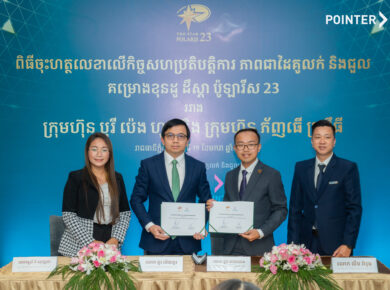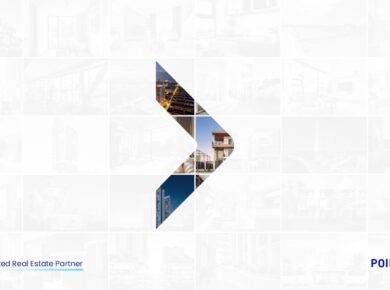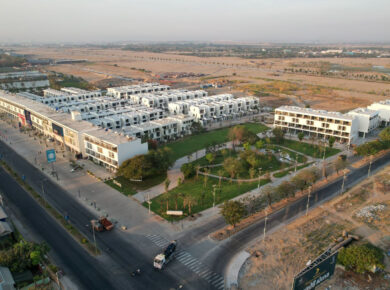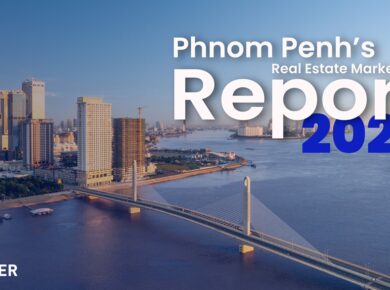ERJ Trends 2024: Cambodia the top destination’ for Chinese tire makers
Cambodia’s tire industry is witnessing an unprecedented wave of Chinese investments, spurred by a $1-billion deal that leverages the nation’s favorable trade ties with the US and Europe. Big names such as Sailun Group, General Science, Shouguang Firemax, and Qingdao Doublestar have all expanded or launched operations in special economic zones across the country, eyeing Cambodia’s strategic location and cost-effective production environment. Notably, Sailun has nearly doubled its planned expansion in Svay Rieng and ventured into Kampot for a tire cluster project, while General Science and others have boosted capacities to meet global demand for passenger car radial (PCR) as well as truck and bus radial (TBR) tires.
Infrastructure and related industries are also on the rise, with construction giants like Jiangsu Provincial Construction and machinery suppliers like MESNAC setting up facilities to support this rapid growth. Moving into 2025, Cambodia’s tire-manufacturing landscape appears primed for continued expansion, establishing the Kingdom as a prime hub in Asia’s rubber supply chain.
Source: European Rubber Journal
Cambodian PM breaks ground for new satellite city project on Mekong River shores opposite capital’s downtown
Cambodian Prime Minister Hun Manet led a groundbreaking ceremony for the 210-hectare Mekong Quay City project on the eastern shores of the Mekong River in Kandal province, directly across from downtown Phnom Penh. Jointly invested by TP Moral Group and Khun Sea Group, the development will feature modern commercial buildings, shopping malls, hotels, educational institutions, residential areas, and cultural-tourism centers. During the ceremony, the prime minister noted that this “mega-project” reflects a gradual revival of the real estate sector and will stimulate economic growth through new investment, trade, and hospitality opportunities.
Industry experts, including Hong Vanak of the Royal Academy of Cambodia, remain optimistic about the market’s long-term prospects. They predict a gradual rebound starting in 2025, with sectors like garment, footwear, tourism, and agriculture attracting increased foreign investment. Once completed, Mekong Quay City is poised to become an iconic hub, bolstering Cambodia’s positioning as a vibrant economic and cultural destination.
Source: Xinhua
CDC records 40% jump in investment to $7B capital for ‘24
The Cambodia Development Council (CDC) has approved 414 investment projects in 2024, amounting to nearly $7 billion—an impressive 40 percent rise from last year’s $4.92 billion. Prime Minister Hun Manet, presiding over the CDC for the first time, attributes this uptick to the country’s continued political stability and enhanced infrastructure, which have helped attract both domestic and foreign investors. Economists note that free trade agreements, robust energy strategies, and a push for advanced manufacturing—such as electronics and automotive—are key draws fueling Cambodia’s competitive edge.
New tools like the “Cambodia Investment Project Management System” (cdcIPM) further streamline registration, enabling investors to apply from anywhere, track progress online, and enjoy faster approvals for Qualified Investment Projects (QIPs). Experts predict that as costs for energy and raw materials stabilize, Cambodia’s attractiveness will grow. With infrastructure upgrades and improved legal frameworks ongoing, the Kingdom’s investment climate is set for sustained momentum in the coming years.
Source: Phnom Penh Post
Sihanoukville revitalises “ghost” buildings with 101 projects underway
Sihanoukville, once a beacon of Cambodia’s economic growth, saw over 300 “ghost” buildings left incomplete in the wake of the Covid-19 pandemic. Now, with the government’s One Window Service Office (OWSO) policy, 101 of these stalled projects are springing back to life, demonstrating renewed investor confidence. Simplified procedures, tax exemptions, and Prime Minister Hun Manet’s dedicated sub-decree have helped break through the gridlock, allowing major developments to resume and boosting the city’s construction and investment sectors.
This revival is central to Manet’s “Special Investment Promotion Programme in Preah Sihanouk Province 2024,” which aims to transform the region into a “Model Multi-Purpose Special Economic Zone.” Governor Mang Sineth reports that 40 of the previously abandoned projects have already resumed construction, with seven completed. By resolving ownership disputes and supporting foreign developers, officials hope Sihanoukville will continue to attract new investors and firmly reclaim its status as a prime Cambodian economic hub.
Source: Phnom Penh Post
Investment Summit Shows Preah Sihanouk Potential
Preah Sihanouk province hosted a two-day investment summit (December 17–18) to showcase the region’s vast business potential. Organized by the Preah Sihanouk Province Investment Promotion Working Group, the event unveiled a 15-year master plan that envisions the province as a multi-purpose special economic zone, alongside neighboring areas such as Kampot, Kep, and Koh Kong. Officials aim to attract up to $20 billion in private sector funds by creating four specialized zones for tourism, industry, logistics, and trade and finance. Generous tax incentives, customs facilitation, and streamlined one-stop services are key draws, coupled with improved infrastructure and a dedicated administrative body to assist investors.
Summit speakers, including Secretary of State Hean Sahib, highlighted significant progress, with 213 projects already facilitated—totaling $6 billion in investment and creating 40,000 jobs. Despite concerns about law enforcement and governance raised by economist Ky Sereyvath, the province’s enhanced incentives and growing focus on public service reforms are fueling optimism for continued growth.
Source: CambodiaNess
Construction, real estate debt hits $18B amid post-pandemic decline
Cambodia’s construction and real estate sectors, once booming with nearly two decades of growth, have reported a combined debt of around $18.4 billion as of September 2024. According to Chou Vannak, director-general of the Real Estate Business and Pawnshop Regulator (RPR), this surge is partly due to increased borrowing by developers, investors, and individual homebuyers during the pre-pandemic years. Financial institutions played a key role, funding both corporate and personal loans—a move propelled by the sectors’ robust performance at the time.
Although current loan growth in construction and real estate has slowed, economists like Hong Vanak emphasize the importance of nurturing income-generating opportunities to ensure borrowers can comfortably repay their debts. Meanwhile, the government has continued to issue construction permits and create policies to attract fresh investment, stimulate tourism, and boost overall economic activity, signaling optimism for the future despite lingering challenges from the post-pandemic landscape.
Source: Phnom Penh Post
Sihanoukville Port surpasses 1M TEUs: on track 2.6M by 2030
In a milestone for Cambodia’s maritime sector, the Sihanoukville Autonomous Port (PAS) has exceeded 1 million TEUs in annual container throughput, marking a 29 percent year-on-year increase. Prime Minister Hun Manet lauded this achievement as a key indicator of the nation’s expanding global trade role. Ongoing multi-phase expansions, backed by more than $1.3 billion in investments, aim to boost capacity to 2.64 million TEUs by 2030. The first phase alone will add a 350-metre terminal, increasing annual capacity by 450,000 TEUs, with deeper berths to accommodate larger container ships and reduce reliance on transshipment.
Officials project 1.5 million TEUs by 2027 and 2 million by 2029, showcasing Cambodia’s ambition to remain competitive with major regional ports. By streamlining port operations, improving logistics, and leveraging JICA-backed loans, PAS anticipates handling increasingly significant volumes from key markets such as China and the US. This expansion will ultimately lower shipping times, bolster regional integration, and further elevate Sihanoukville’s status as a critical trade hub.
Source: Phnom Penh Post






